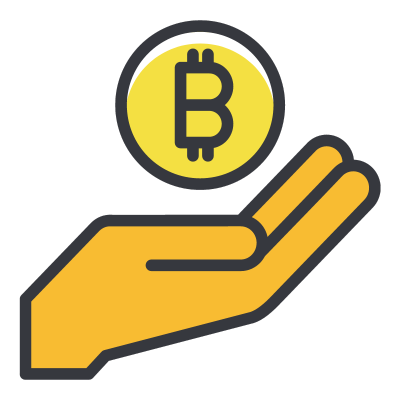Cryptocurrency token listing is a critical step for any blockchain-based project. It refers to the process of making a cryptocurrency token available for trading on a cryptocurrency exchange. For any project looking to gain traction, attract investors, and build liquidity, token listing is one of the most significant milestones. In this blog, we will explore the importance of token listing, its benefits, and how it can impact a crypto project’s success.
What is a Token Listing?
Token listing involves adding a cryptocurrency token to a crypto exchange, where it can be traded, bought, or sold by users. Exchanges act as the marketplace for cryptocurrencies, where tokens are paired with other cryptocurrencies like Bitcoin, Ethereum, or stablecoins (e.g., USDT).
Why Token Listing Matters: Key Benefits
Liquidity Creation
- Increased Trading Volume: Listing a token on exchanges opens the door to greater liquidity, as more users gain access to trade the token. This increased trading volume enhances market efficiency.
- Ease of Buying and Selling: Token holders can easily buy and sell the token, making it more accessible to a broader audience. This accessibility can drive higher adoption rates for the project.
Market Exposure
- Global Reach: By being listed on a well-known exchange, your token can be exposed to millions of potential investors globally.
- Increased Visibility: Exchanges often have their own marketing channels, and new listings are frequently promoted. This helps the token gain attention from crypto enthusiasts and institutional investors.
Trust and Credibility
- Project Validation: Getting listed on a major exchange signals to investors that the project has passed a vetting process. This builds confidence in the project’s legitimacy and future.
- Brand Recognition: A listing on renowned exchanges (like Binance, Coinbase, Kraken) can significantly enhance the project’s reputation. Users tend to trust tokens that are listed on established platforms.
Price Discovery
- Fair Market Value: Token listing provides a transparent platform for price discovery. The more exchanges the token is listed on, the more accurate its market valuation becomes based on demand and supply dynamics.
- Volatility Control: More liquidity across multiple exchanges can help stabilize price volatility, offering smoother trading experiences.
Increased Adoption
- Wider User Base: A token listed on an exchange is more likely to be adopted by users, developers, and businesses for various use cases, including DeFi platforms, staking, or other utilities.
- Partnership Opportunities: With wider exposure, the project may attract strategic partnerships, which can help enhance its ecosystem and use case.
Token Listing Process: Step-by-Step Overview
Steps | Description |
1. Whitepaper | Ensure your whitepaper is clear, highlighting the project’s use case, tokenomics, and technical specifications. |
2. Compliance | Ensure compliance with local and international regulations to prevent any legal issues that could hinder the listing. |
3. Exchange Application | Apply to relevant exchanges, providing all necessary documentation about the token, project, and team. |
4. Vetting Process | Exchanges perform technical and legal due diligence to verify the legitimacy of the token and the project’s credibility. |
5. Initial Listing | Upon approval, the token is listed on the exchange, and users can start trading it. |
6. Liquidity Management | Projects often need to provide initial liquidity to support smooth trading in the early stages post-listing. |

Types of Crypto Exchanges for Token Listing
Centralized Exchanges (CEXs)
- Examples: Binance, Kraken, Coinbase.
Key Features:
- Higher liquidity.
- Enhanced security and support.
- Simplified onboarding for new investors.
Decentralized Exchanges (DEXs)
- Examples: Uniswap, SushiSwap, PancakeSwap.
Key Features:
- No intermediaries – peer-to-peer trading.
- Users maintain control over their private keys.
- Ideal for tokens built on smart contract platforms like Ethereum or Binance Smart Chain.
Costs Associated with Token Listing
Cost Type | Description |
Listing Fees | Many exchanges charge a listing fee that varies depending on the platform, ranging from $10,000 to over $1 million for top-tier exchanges. |
Market Makers | Some exchanges require projects to provide market makers to ensure liquidity and prevent large price fluctuations. |
Legal and Compliance | Projects need to meet regulatory requirements, which may involve legal fees for setting up a compliant framework. |
Marketing and Promotion | Projects often spend on marketing efforts once listed to attract traders and investors. |
Discover Blockchain Solutions For Your Business

Factors to Consider Before Listing on an Exchange
Regulatory Compliance
- KYC/AML Guidelines: Ensure your token complies with Know Your Customer (KYC) and Anti-Money Laundering (AML) regulations.
Tokenomics
- Supply/Demand Balance: The token’s supply and distribution strategy should be clear to avoid inflation and maintain price stability.
Community Support
- Active User Base: Engage your community prior to listing to ensure there’s enough support for trading once the token goes live.
Liquidity Provision
- Sufficient Liquidity: The project should provide sufficient liquidity to support trading, particularly in the early stages of listing.
Long-Term Growth Plan
- Sustainability: A clear plan for future development and adoption will ensure the token’s continued growth post-listing.
Potential Risks and Challenges of Token Listing
Price Volatility
- Risk of Sudden Price Swings: When a token is newly listed, it can experience high volatility due to speculation, especially on smaller exchanges.
Low Liquidity
- Impact on Trading: Without enough liquidity, tokens may be hard to buy or sell, leading to negative market perception.
Exchange Delisting
- Failed Projects: If a project fails to deliver on its promises or loses momentum, exchanges might delist the token, causing a significant drop in value and reputation.
Security Breaches
- Vulnerabilities: Being listed on exchanges with weak security could expose tokens to hacking risks, leading to loss of funds and credibility damage.
Conclusion: The Strategic Importance of Token Listing
In conclusion, token listing is not just a marketing event; it is a strategic move that can drive liquidity, trust, and market exposure for a crypto project. Carefully selecting the right exchange and ensuring regulatory compliance can make the difference between a successful launch and an underwhelming one. Projects must also consider liquidity management, community engagement, and a long-term vision for sustainable growth.
By understanding the significance of token listing, blockchain projects can position themselves for success in the competitive world of cryptocurrencies.
Key Takeaways:
- Token listing enhances liquidity and market exposure.
- Trust and credibility are built when listed on major exchanges.
- Listing provides opportunities for price discovery and adoption.
- A thorough vetting process and compliance with regulations are crucial for a successful listing.
- Projects must be prepared for costs, risks, and market volatility.
By strategically planning the token listing process and carefully choosing exchanges, projects can maximize their potential and thrive in the ever-evolving crypto space.
This detailed breakdown covers every aspect of token listing, making it easier for any reader, whether a seasoned investor or a beginner, to grasp the critical factors involved.















